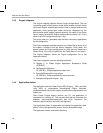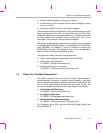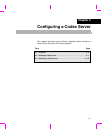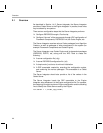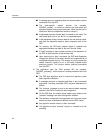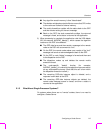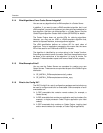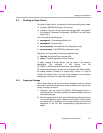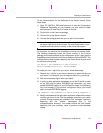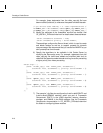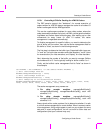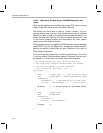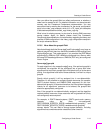
Overview
2-6
2.1.4 What Algorithms Can a Codec Server Integrate?
You can use any algorithm that is xDM-compliant in a Codec Server.
In addition, if you want to use a xDAIS-compliant algorithm that is not
xDM-compliant, you can first implement your own stubs and skeletons for
that algorithm, and then use that algorithm in a Codec Server. See the
Codec Engine Algorithm Creator User’s Guide (SPRUED6) for details.
The Codec Engine does not provide APIs for chaining algorithms.
However, you may use an xDM- or xDAIS-compliant algorithm that,
behind its exposed interface, chains algorithms together.
The xDM specification defines an uniform API for each class of
algorithms. From an application perspective this means that the same
API will be used for an H.264 and an MPEG-4 decoder.
The algorithm is identified by an unique string in the "create" function.
Everything else should remain the same. Note that the application must
be aware of the restrictions of the algorithm it is trying to invoke. For
example TI video decoders expect one frame of data to work properly.
2.1.5 What Examples Exist?
You can use the Codec Servers as examples for creating your own
Codec Servers. These servers are provided as part of the Codec Engine
distribution.
❏ CE_INSTALL_DIR/examples/servers/all_codecs
❏ CE_INSTALL_DIR/examples/servers/video_copy
2.1.6 What is the Config Kit?
The XDC Config Kit is a set of configuration packages and tools that may
be used to configure and build an executable. Some examples of such
executables are:
❏ A DSP executable that contains remote codecs (for example, a
Codec Server)
❏ A DSP executable that contains an application and local codecs (for
example, a single processor Codec Engine application plus local
codecs)
❏ A GPP executable that contains an Codec Engine, implying local
and/or remote codecs (for example, a Codec Engine application)



